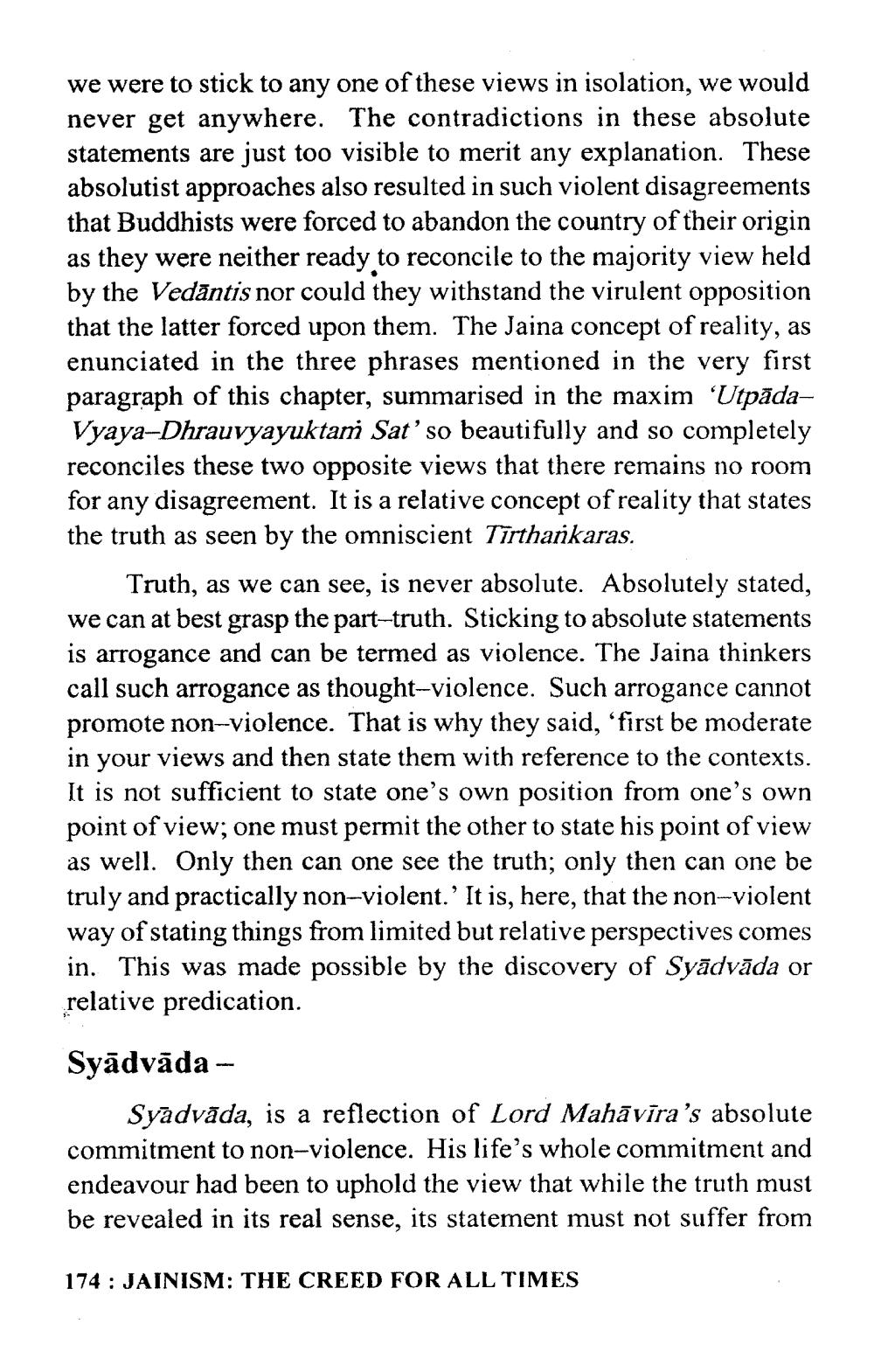________________
we were to stick to any one of these views in isolation, we would never get anywhere. The contradictions in these absolute statements are just too visible to merit any explanation. These absolutist approaches also resulted in such violent disagreements that Buddhists were forced to abandon the country of their origin as they were neither ready to reconcile to the majority view held by the Vedāntis nor could they withstand the virulent opposition that the latter forced upon them. The Jaina concept of reality, as enunciated in the three phrases mentioned in the very first paragraph of this chapter, summarised in the maxim 'UtpadaVyaya-Dhrauvyayuktami Sat’so beautifully and so completely reconciles these two opposite views that there remains no room for any disagreement. It is a relative concept of reality that states the truth as seen by the omniscient Tīrtharkaras.
Truth, as we can see, is never absolute. Absolutely stated, we can at best grasp the part-truth. Sticking to absolute statements is arrogance and can be termed as violence. The Jaina thinkers call such arrogance as thought-violence. Such arrogance cannot promote non-violence. That is why they said, 'first be moderate in your views and then state them with reference to the contexts. It is not sufficient to state one's own position from one's own point of view; one must permit the other to state his point of view as well. Only then can one see the truth; only then can one be truly and practically non-violent.' It is, here, that the non-violent way of stating things from limited but relative perspectives comes in. This was made possible by the discovery of Syādvāda or relative predication.
Syādvāda -
Syādvāda, is a reflection of Lord Mahāvīra's absolute commitment to non-violence. His life's whole commitment and endeavour had been to uphold the view that while the truth must be revealed in its real sense, its statement must not suffer from
174 : JAINISM: THE CREED FOR ALL TIMES




